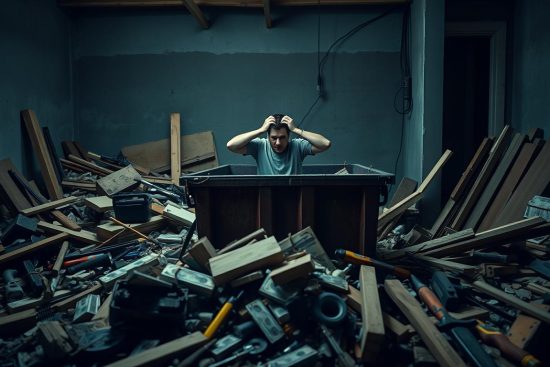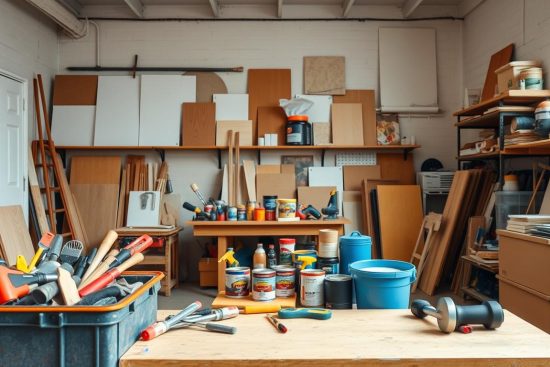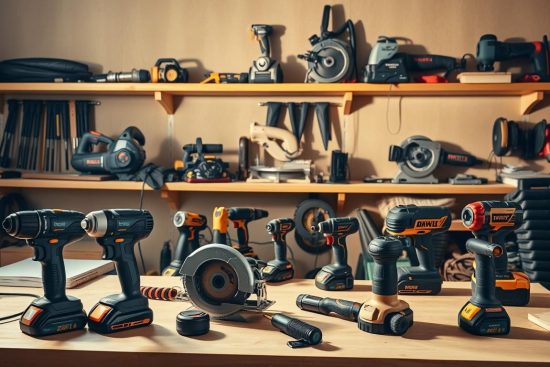Choosing the right surfaces for your house can feel overwhelming. With so many materials available—from sleek vinyl to timeless hardwood—it’s easy to get stuck. This guide simplifies the process by comparing popular styles and their ideal uses in kitchens, bathrooms, living areas, and beyond.

Every space in your house has unique needs. High-traffic areas like entryways demand durability, while cozy bedrooms prioritize comfort. We’ll explore how factors like moisture resistance, maintenance, and budget influence your best choice for each zone.
Whether you’re renovating a single room or your entire property, balancing cost, aesthetics, and practicality matters. Modern solutions like luxury vinyl plank offer water-resistant perks perfect for basements, while natural stone adds elegance to formal spaces. Our comparisons draw insights from trusted sources like The Home Depot to ensure reliable advice.
Key Takeaways
- Match material strengths to room-specific needs (e.g., moisture resistance for bathrooms)
- Consider long-term costs, including installation and maintenance
- Prioritize durability in high-traffic zones like hallways
- Explore hybrid materials that blend style and functionality
- Use lifestyle factors (pets, kids) to narrow your options
By the end of this guide, you’ll confidently select surfaces that enhance your home’s beauty while standing up to daily life. Let’s dive into the pros, cons, and perfect placements for today’s top materials!
Understanding Your Home Flooring Needs
Your home’s foundation starts from the ground up. Before selecting materials, assess how each space functions. Rooms like kitchens face spills and heavy use, while bedrooms need warmth underfoot. Let’s break down what matters most.
Room Environment Essentials
Moisture levels, foot traffic, and sunlight exposure shape material performance. Porcelain tile thrives in wet bathrooms, while hardwood warms low-humidity living rooms. Pro tip: Use this quick-reference table to match surfaces to room demands:
| Room Type | Key Factors | Top Material Matches |
|---|---|---|
| Bathrooms | Water resistance | Vinyl, ceramic tile |
| Hallways | Durability | Laminate, stone |
| Bedrooms | Comfort | Carpet, cork |
Smart Budget & Lifestyle Choices
Installation costs vary widely—DIY-friendly vinyl planks cost $2–$5/sq. ft., while custom stonework runs $15+. The Spruce notes: “Long-term savings often justify higher upfront costs for durable materials.”
Consider daily life: Pets and kids demand scratch-resistant surfaces. If you love timeless home design trends, prioritize neutral tones that adapt to style shifts. Balance your budget with materials that align with how you truly live.
Overview of Flooring Materials and Styles
Your floors set the stage for your home’s character. Three standout choices dominate modern interiors: classic hardwood, versatile tile, and innovative wood alternatives. Each brings distinct textures and performance perks to spaces.
Natural hardwood remains a top pick for its warmth. Oak and maple offer timeless grains, while walnut adds rich contrast. Engineered wood provides similar looks with better moisture resistance—ideal for kitchens.
Ceramic and porcelain tile shine in wet areas. Their waterproof nature suits bathrooms, while bold geometric patterns create focal points. Modern printing techniques mimic materials like marble at lower costs.
| Material | Popular Styles | Durability | Maintenance |
|---|---|---|---|
| Hardwood | Plank, Herringbone | High (resists dents) | Regular refinishing |
| Tile | Subway, Geometric | Excellent (waterproof) | Grout cleaning |
| Engineered Wood | Wide-plank, Distressed | Moderate (scratch-resistant) | Occasional mopping |
Today’s designs blend practicality with visual appeal. Textured tiles prevent slips, while wire-brushed wood hides minor scratches. As Houzz notes: “Homeowners increasingly mix materials—like wood-look porcelain in basements—for cohesive yet functional spaces.”
Your final selection should reflect both lifestyle needs and design dreams. Light-toned planks make rooms feel airy, while dark tiles anchor modern aesthetics. With smart choices, your surfaces become lasting style statements.
In-Depth Look at Vinyl Flooring
Vinyl has evolved into a go-to solution for modern homes, blending practicality with design flexibility. Its scratch-resistant surface and waterproof core make it ideal for active households. Let’s explore what makes this material a standout choice.
Types and Finishes of Vinyl
Three main formats dominate the market. Luxury vinyl plank mimics hardwood with realistic wood-grain textures. Sheet vinyl offers seamless coverage for bathrooms, while tile versions replicate stone or ceramic looks. Each style suits different spaces—planks add warmth to living rooms, and tiles handle mudroom messes.
Finishes boost performance. No-wax surfaces stay shiny with simple sweeping. Urethane coatings add extra protection against pet scratches. For busy kitchens, enhanced urethane resists stains from spills like coffee or wine.
Installation Methods and Cost Efficiency
Homeowners love vinyl’s DIY-friendly options. Peel-and-stick squares work for quick bathroom updates. Click-lock systems create floating floors without glue. Professional adhesive installation ensures longevity for high-traffic hallways.
While upfront costs range from $2–$7 per square foot, vinyl’s durability pays off. HGTV notes: “Properly installed planks can last 10–20 years, even with heavy use.” The wear layer thickness—measured in mils—determines resilience. Opt for 12+ mil layers in playrooms or entryways.
This material’s waterproof nature eliminates warping worries, making it perfect for basements. Pair low maintenance with style versatility, and you’ve got a solution that grows with your family’s needs.
Insights into Tile Flooring Options
Tile surfaces combine practicality with timeless style, offering solutions for spaces that demand both beauty and resilience. Their water-resistant nature makes them a top pick for kitchens, bathrooms, and basements. Modern designs now replicate textures like weathered wood or veined marble, blending classic appeal with modern durability.

Ceramic and Porcelain Differences
Though often grouped together, ceramic and porcelain tile have distinct qualities. Porcelain undergoes higher firing temperatures, creating a denser, less porous surface. This makes it ideal for wet areas like shower walls. Ceramic works well in moderate-moisture zones, offering affordability without sacrificing style.
| Feature | Ceramic | Porcelain |
|---|---|---|
| Water Resistance | Good | Excellent |
| Cost (per sq. ft.) | $2–$5 | $3–$10 |
| Best For | Backsplashes | High-traffic bathrooms |
Natural Stone and Engineered Tile Trends
Granite and marble add luxury but require yearly sealing to prevent stains. Engineered stone tiles mimic these looks with easier upkeep. Slate’s textured surface provides slip resistance, perfect for pool decks or entryways.
Most tiles need just weekly sweeping and occasional mopping. Neutral tones like greige remain popular, while bold geometric patterns create statement floors. As a design expert notes: “Tiles anchor a room’s aesthetic while handling spills, pets, and daily wear.”
With endless shapes and finishes, this material adapts to any design vision. You’ll find it’s a smart option for combining elegance with everyday practicality.
Exploring Laminate Flooring Benefits
Homeowners seeking style on a budget often turn to laminate for its versatility. This material mimics pricier surfaces—from oak planks to marble tiles—at a fraction of the cost. Modern printing techniques create textures so realistic, guests might mistake it for natural wood or stone.
Smart Installation and Realistic Details
The secret to laminate’s DIY appeal lies in its interlocking system. Tongue-and-groove edges snap together like puzzle pieces, letting you create floating floors without glue. The Spruce confirms: “Most homeowners complete installations in a weekend using basic tools.”
Advances in embossing technology add depth to surfaces. Hand-scraped finishes hide minor scratches, while glossy coatings reflect light for brighter rooms. You’ll find styles matching farmhouse, modern, or traditional design themes effortlessly.
Balancing Strength and Limitations
Laminate excels in hallways and living rooms thanks to its scratch-resistant layer. However, prolonged moisture exposure can warp planks. Use this quick guide to gauge performance:
| Feature | Pros | Cons |
|---|---|---|
| Durability | Withstands pet claws | Not fully waterproof |
| Maintenance | Simple sweeping | Can’t refinish |
| Cost | $1–$5/sq. ft. | Shorter lifespan |
Choose thicker wear layers (12mm+) for busy kitchens. Neutral wood looks blend with evolving decor, while bold patterns make artistic statements. As trends shift, your floors stay stylish without breaking the bank.
Discovering Hardwood Flooring Trends
Hardwood brings warmth and character to any space, adapting effortlessly to modern and classic interiors. Its ability to age gracefully makes it a favorite for homeowners wanting lasting value. Let’s explore why this material remains a top pick and how different types meet varied needs.

Solid vs. Engineered: Key Differences
Solid wood planks are cut from single timber pieces, offering unmatched authenticity. They can be sanded and refinished 5–7 times, evolving with your style over decades. Red oak’s bold grain suits rustic spaces, while maple’s smooth texture fits minimalist designs.
Engineered hardwood layers real wood veneer over plywood. This construction resists humidity changes, making it ideal for basements or kitchens. Walnut’s rich tones add drama to formal dining rooms. Though refinishing is limited to 2–3 times, it’s more budget-friendly upfront.
| Feature | Solid Hardwood | Engineered Hardwood |
|---|---|---|
| Construction | 100% wood | Layered core + veneer |
| Moisture Tolerance | Low | Moderate |
| Refinishing Limit | 5–7 times | 2–3 times |
| Best Rooms | Living areas, bedrooms | Kitchens, basements |
Architectural Digest notes: “Homeowners choose hardwood for its timeless appeal—dark stains trend now, but lighter tones are making a comeback.” You’ll love how versatile these surfaces are, whether you prefer herringbone patterns or wide planks.
Durability shines in high-traffic zones. Properly maintained hardwood floors last generations, justifying their higher initial cost. Pair them with area rugs for added comfort, and you’ve got a foundation that balances beauty with practicality.
Why does this remain one of the best flooring choices? It’s simple: no other material offers the same blend of elegance, adaptability, and long-term ROI. From cozy cottages to urban lofts, hardwood’s charm never fades.
Hybrid and Resilient Flooring for Modern Homes
Innovative materials are redefining home surfaces with smarter designs. Hybrid resilient products merge vinyl’s practicality with wood-like textures or stone patterns. Their secret? A multi-layered build that handles daily wear while keeping spaces stylish.
Layered Construction and Durability
These surfaces stack four key components. A rigid core resists dents from furniture legs. The top vinyl layer repels spills and scratches—perfect for homes with pets. A cushioned underlayer reduces noise in apartments, while the decorative surface mimics natural materials convincingly.
Installers love how these planks handle uneven subfloors. “Hybrid styles bridge gaps better than traditional vinyl,” notes a HGTV pro. They’re equally at home in offices or playrooms, thanks to commercial-grade durability.
| Feature | Hybrid Resilient | Traditional Vinyl |
|---|---|---|
| Thickness | 5–8 mm | 2–4 mm |
| Waterproof | Full planks | Surface only |
| Design Options | 50+ patterns | 20–30 patterns |
Maintenance is a breeze—weekly sweeping keeps the surface pristine. Families use these in kitchens and basements without worrying about moisture damage. With click-lock installation, DIYers can transform rooms over a weekend.
From urban lofts to suburban homes, hybrid materials deliver style that adapts. Their layered engineering proves you don’t need to sacrifice comfort for resilience.
Practical Aspects of Carpet Flooring
Carpet adds a cozy layer to any home, blending comfort with style. Its soft texture and noise-reducing qualities make it ideal for creating inviting spaces. Let’s explore how different fibers and designs meet varied household needs.
Types of Fibers and Comfort Levels
Three main styles dominate carpet designs. Cut pile offers plush comfort underfoot, perfect for bedrooms. Loop pile provides durability for hallways, while cut-and-loop blends textures for visual interest.
| Fiber Type | Best For | Maintenance |
|---|---|---|
| Nylon | High-traffic areas | Stain-resistant |
| Polyester | Bedrooms | Easy cleaning |
| Wool | Formal spaces | Professional care |
Families love carpet’s insulating properties—it keeps rooms warmer in winter. Prices typically range from $2–$7 per square foot installed. Thicker pads boost comfort but add $0.50–$1 per square foot.
For busy households, stain-resistant treatments extend carpet life. A design expert advises: “Choose low-pile styles for pet-friendly houses—they hide dirt better between cleanings.”
When selecting textures, balance softness with practicality. Plush carpets pamper feet in bedrooms, while tight loops handle hallway traffic. Neutral tones help small rooms feel larger, and patterned designs mask wear in play areas.
Alternative Flooring Options for Unique Spaces
Not every room fits standard solutions—some spaces need specialized materials to shine. Whether you’re designing a home gym or eco-conscious living area, innovative surfaces offer tailored performance. Let’s explore textures that balance function with striking style.
Specialized Materials for Demanding Areas
Bamboo stands out as a luxury choice with eco-friendly credentials. This fast-growing grass matures in 5 years—three times faster than hardwood—and resists dents better than oak. Its natural grain patterns add warmth to sunrooms or modern offices.
Rubber excels in high-impact zones like gyms or playrooms. Its shock-absorbing surface protects joints during workouts and reduces noise from dropped weights. Textured finishes prevent slips, even when sweaty.
| Material | Best Use | Durability | Eco-Friendly |
|---|---|---|---|
| Bamboo | Living rooms | 8/10 | Yes |
| Rubber | Home gyms | 9/10 | Recyclable |
| Cork | Music rooms | 7/10 | Renewable |
These surfaces bring unexpected design flair. Bamboo’s vertical planks create height in small spaces, while rubber tiles come in bold colors for garage workshops. “Unconventional materials often become a room’s focal point,” notes a Green Building Advisor contributor.
For homes needing unique solutions, these types merge practicality with personality. They prove specialized spaces deserve surfaces as distinctive as their purpose.
Flooring Options for Every Room
Every room in your home deserves surfaces that match its unique rhythm. From splash-prone zones to cozy retreats, the right material enhances both function and style. Let’s explore how to pair surfaces with spaces using insights from The Spruce.
Spaces That Battle Moisture Daily
Kitchens and bathrooms demand water-resistant warriors. Porcelain tile handles spills and steam effortlessly, while vinyl plank’s waterproof core prevents warping. For shower areas, textured ceramic tiles add grip without sacrificing sleek looks.
Consider these moisture-ready picks:
| Room Type | Key Needs | Top Picks |
|---|---|---|
| Kitchen | Stain resistance | Luxury vinyl, glazed tile |
| Bathroom | Slip resistance | Textured porcelain, sheet vinyl |
| Laundry | Waterproofing | Rubber tiles, epoxy coating |
Comfort Zones vs. High-Impact Areas
Bedrooms thrive under plush carpet or cork—materials that cushion feet and dampen sound. Living areas benefit from scratch-resistant laminate that mimics wood but costs less. For commercial spaces like cafes, luxury vinyl tile (LVT) stands up to constant foot traffic.
The Spruce advises: “Match surface hardness to room activity—softer for relaxation, tougher for hustle.” Here’s how materials stack up:
- Family rooms: Engineered wood (hides pet scratches)
- Home offices: Bamboo (eco-friendly & durable)
- Retail shops: Polished concrete (industrial chic)
Installation costs vary widely—expect $3–$8/sq. ft. for bathroom tiles versus $1–$4 for bedroom carpet. Prioritize materials that balance daily demands with your design vision, and you’ll create spaces that work as hard as they charm.
Conclusion
Your home’s personality shines through every surface choice. Porcelain tiles guard against bathroom splashes, while hardwood planks add timeless warmth to living areas. Kitchens thrive with water-resistant vinyl planks that handle spills and heavy foot traffic.
Each type brings unique strengths. Dense porcelain works in wet zones, and engineered wood balances moisture resistance with style. For busy households, hybrid materials blend scratch-proof surfaces with realistic textures.
Budget and lifestyle shape decisions. Luxury vinyl suits DIYers wanting quick updates, while natural stone elevates formal spaces. Bedrooms benefit from soft cork or carpet, and basements need waterproof solutions like rubber tiles.
Homeowners should weigh installation costs against long-term value. Simple maintenance routines extend material lifespans—sweeping hardwood weekly or resealing stone annually. Explore detailed comparisons to match your rooms’ needs.
With thoughtful evaluation, you’ll find surfaces that marry practicality with design flair. Whether refreshing a single area or renovating entirely, the perfect fit awaits every corner of your home.


